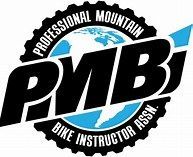A Brief History of Fat Tire Biking
Time to put on some FAT! The fat tire bike, sometimes known as a snow bike, is the newest trend in mountain biking. When you swing a leg over a fat bike, you won't be able to quit smiling and laughing. These bizarre-looking machines not only prolong a cyclist's season (and escape the dreaded trainer!). Used to simplify challenging summer singletrack, sand rides on beaches, and rough rides along river banks in addition to winter snow riding. Let's ride fat bikes together!
A DEFINITION:
A fat bike is an off-road bicycle with enormous tires that are often 3.8 inches or larger and rims that are 2.6 inches or wider. These tires are made for low pressure so that riders can navigate soft, unstable terrain like snow, sand, bogs, and mud. To provide a smooth ride over challenging obstacles, the broad tires can be inflated to pressures as low as 5 psi.
THE FIRST FAT BIKES:
The first contemporary versions of fat bikes were not created until the 1980s, when three guys on separate sides of the globe were inspired. Fat bikes have been around since the early 20th century.
Steve Baker of Icicle Bicycles need a bicycle that could travel through Alaska's snowy landscape. He started it by welding two rims together and attaching two tires side by side to create a double-wide tire measuring 4.4" wide before experimenting with special parts and configurations intended to generate a big contact patch of tire on snow. The first fat bike was created when he pieced together a frame to accommodate the wheels!
Simon Rowaker, an additional Alaskan, was inspired by Baker's concept and created the Snowcat, a rim that is 1.7" (44mm) broad. As the largest manufacturing rim available at the time, this gained the most popularity in the early 1990s and was utilized by many adventure riders.
Ray Molina, an adventure cyclist, tour leader, and frame maker, was also scouting out new terrain in southern New Mexico at roughly the same time. In order to create the initial 88mm (3.2") wide rim and the 3.5" Chevron tire, Ray used two Snowcat rims that he had previously welded together while riding sand dunes and arroyos. To accommodate the new apparatus, he created a number of frames, and testing was done at the Samalayuca sand dunes in Chihuahua, Mexico. The advantages of the extra-wide tires and rims changed the game. Molina produced Remolina rims and had a sand bike available for purchase by 1999.
The first Iditabike, introduced in 1987, required riders to go 200 miles through the backwoods of Alaska on terrain that ranged from soft snow, glare ice, and liquid water overflow to rideable frozen crust. The racers walked A LOT with their bikes, which led to a spike in equipment development for the next year.
Mike Curiak of Colorado won the Iditasport Impossible race to Nome in 2000 by pushing and riding his bike more than 1,000 miles in just over 15 days, breaking the previous record by six days. He rode a custom Willits frame built by Wes Williams in Colorado, built with Remolino rims and 3.0" tires. This achievement may have served as the best fat bike proof of concept.
FAT BIKES FOR EVERYONE:
The Surly Pugsley was the one factor that increased the fat bike's accessibility. The 3.7" Endomorph tire and 2.6" wide Large Marge rims were features of the 2005 Purple Beast. The Pugsley introduced fat bikes to neighborhood bike shops all over the world. Distributed widely through Quality Bicycle Parts (QBP), "the public" could now purchase their very own fat bike. Riders assembled the frame and fork that were shipped as a kit using standard mountain bike parts.
A number of additional businesses entered the market not long after the Pugsley's popularity became clear. The Fatback bike firm of Anchorage, Alaska introduced ultra-wide hubs (165mm, then 170mm, now 190mm) and rims (70mm and 90mm) in 2007, enabling more float with less weight.
Complete fat bikes were introduced by Surly and Salsa in 2010, which led to a further increase in sales and accessibility. The momentum grew even stronger.
FAT BIKES TODAY:
Modern fat bikes can glide through terrain that "normal" mountain bikes couldn't handle thanks to their lightweight wheels and tires, front and rear suspension, trail-based design, and high-end components.
These formerly unknown novelty are now being produced for the general public by numerous small and large manufacturers, such as Trek with the Farley, Salsa with the Beargrease and Mukluk, Specialized with the Fatboy, and On-One with the Fatty. Rocky Mountain, Felt, Kona, Pivot, and numerous other brands came next. You may find the lengthy list at www.fat-bike.com.
If you weren't from Alaska, it wasn't immediately obvious what the Surly Pugsley was for when it was first introduced in 2005. Most people had the opinion that a fat bike wasn't necessary unless you simply intended to ride in the snow. The idea that fat bikes are NOT simply for snow and can travel where no bike has gone before and where all bikes have gone wasn't realized until a few years later when other manufacturers began making their own lines of fat bikes.














